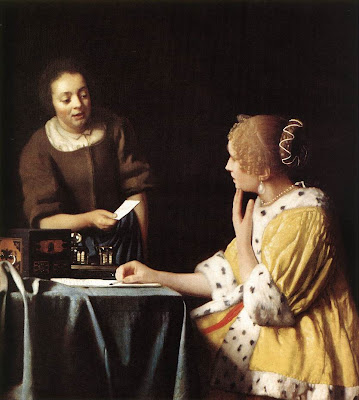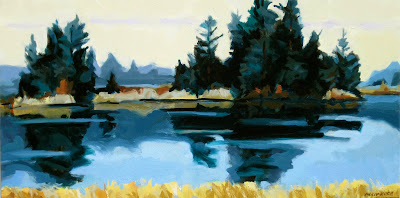Sewing Up a Composition with Edward Hopper

This is Edward Hopper's oil New York Interior. It has that casual, almost accidental pose to the figure that make you feel Hopper might have literally peered in through a window and seen just this. But at the same time the painting has that "just right" quality to it that suggests it is far from an accident. I've always loved pose of the arms and hair of this seamstress. It's easier to see if one isolates key sections of the composition. Here's the right arm. Look at how Hopper squeezes the empty space just below the woman's upper right arm by fluffing up that billowing white fabric she's sowing. Her arm and the uprising white cloth act like book ends pushing in on the empty brown space in the background. It's Hopper's way of instilling personality into the seemingly empty areas of his painting. He knew well that properly painted, every inch of his canvas could be made to speak to the viewer, stimulate their eyes...






.jpg)
